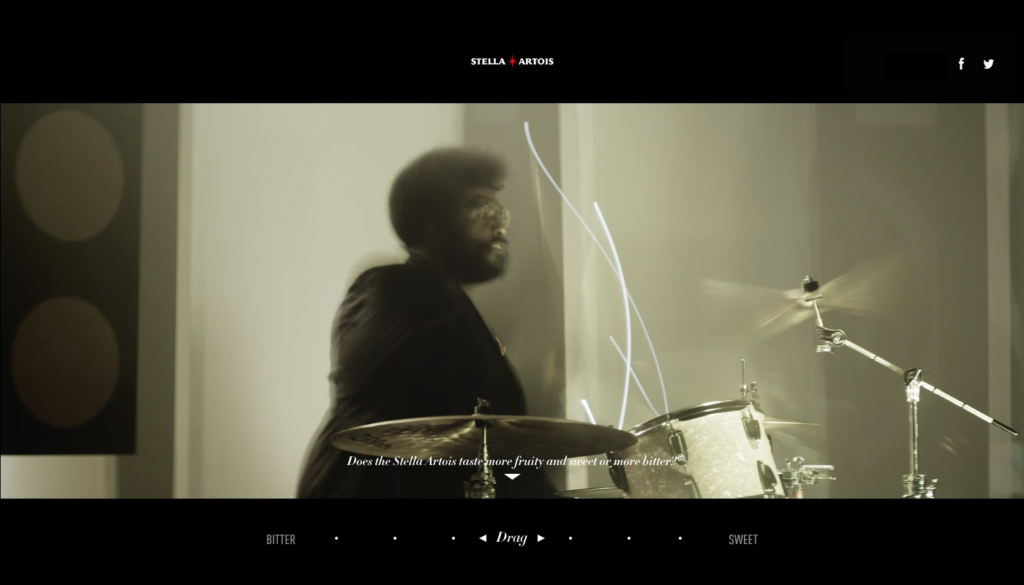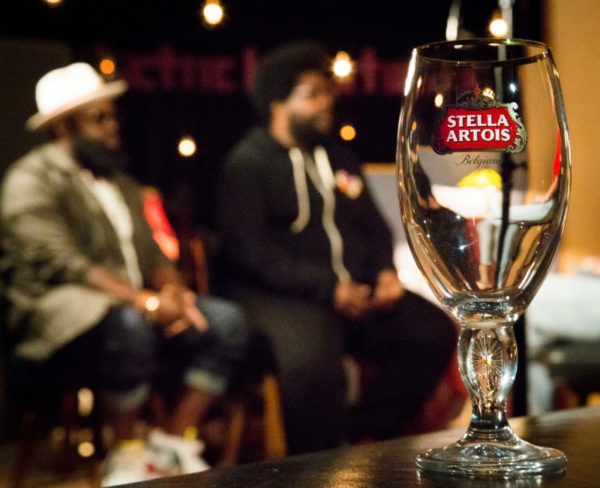Stella Artois, an Anheuser-Busch InBev brand, has developed new technology to connect with its consumers. According to Todd Allen, vice president of global marketing for Stella Artois at Anheuser-Busch InBev, the premium beer brand targets the 25-to-39-year-old mobile-first generation.
“They’re tech-savvy and everything needs to be enabled through mobile and social media, which is how they connect with brands,” Allen told [a]listdaily. “We’re catering to a slightly more affluent consumer who values experiences over possessions.”
Stella has partnered with hip-hop band The Roots, creative agency Sid Lee and production company Tool to release “Bittersweet,” an interactive music video (and original song) that can change the flavor of the Belgian beer.
Allen said The Roots experimented with different pitches, instruments and music styles to create an original, multi-sensorial song that stimulates the ears and the taste buds, based on the research of Professor Charles Spence of the University of Oxford. Professor Spence found that there are surprising connections between the senses (hearing, vision, touch, taste and smell)—when one sense is stimulated, it triggers an effect on the remaining four senses. Called “crossmodal correspondences,” this theory comes to life in two versions of “Bittersweet.”
“The bitter side uses deeper sound and darker colors that can influence the taste of the Stella, while the sweet side is brought out with the more high-energy, fruitier flavors through brighter colors and horns from the music,” Allen said.
Dustin Callif, managing partner of digital at Tool North America, said his team created designs that were projection-mapped in the background during music video featuring The Roots.

“We stacked the videos together so users can seamlessly toggle between the two versions of the song and experience the music video,” Callif said. “There’s a slider at the bottom of the interactive music video that allows you to track whether it’s more bitter or sweet based on what you’re watching and listening to.”
Allen said Stella is encouraging a conversation online and through social channels for people to discuss this interactive experience. The Roots has also been active in promoting the music video through social media. It’s part of a bigger marketing effort that combines multiple senses.
On August 17, The Roots performed both arrangements of “Bittersweet” at an exclusive seating during the opening night of Stella Artois hosts “Le Savoir,” a multi-sensorial dinner theater experience in New York City that ran through August 22 at Skylight Clarkson Square. The show launched August 4 in Montreal for eight nights and moves to Buenos Aires September 9 for eight nights.
Approximately 400 people per night attend the two-hour experience with 134 people per seating and there are three seatings per night. Allen said at Le Savoir,”Stella Artois is bringing together culinary wizards Bompas & Parr, 45 DEGREES (Cirque du Soleil’s events and special projects company) and The Roots to create an experience that stimulates all the senses. Guests will be transported through the seasons during a multi-course dinner featuring food and beer pairings inspired by the spectrum of flavors in a Stella Artois.
Allen said Stella will continue to deliver these experiences throughout this year and into 2017 with local events at key restaurant accounts around the world. There’s also an at-home activation, which encourages consumers to host a party that combines the passion points of food and music.
Stella has explored technology in the past. In January, the company partnered with Matt Damon’s Water.org by launching a YouTube 360 video, which brings to life the experience of one woman and her family in Honduras. The company used the Sundance Film Festival to debut the 360-degree video.
“Virtual reality is going to be a huge platform going forward,” Allen said. “We launched this project where consumers could buy any of three limited edition chalices, and for every chalice sold Stella Artois will help Water.org provide five years of clean water for one person in the developing world.”
Allen said virtual reality allows people to live and feel what it’s like to be the woman who has to walk six hours to get clean water. It shows that the problem is real. “VR is an incredibly important and innovative medium,” Allen said.

